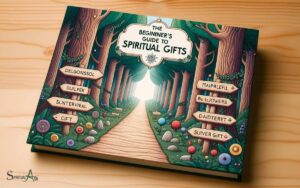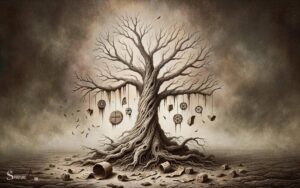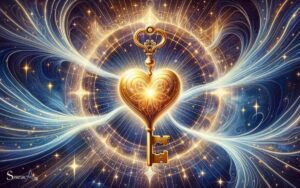Is Pareidolia a Spiritual Gift? No!
No, pareidolia is not a spiritual gift. Pareidolia is a psychological phenomenon where one perceives recognizable patterns or images in random or unrelated objects.
Although pareidolia may invoke a sense of wonder or fascination, it’s ultimately a cognitive quirk rather than a spiritual gift.
The brain’s natural tendency to find recognizable patterns helps humans make sense of their environment, but this phenomenon is not related to spiritual abilities or divine communication.
In fact, pareidolia has been scientifically investigated as a manifestation of the brain’s pattern recognition skills.

Key Takeaway
4 Perspectives: Spiritual Gift And Against Spiritual Gift
| Perspective | Argument for Spiritual Gift | Argument against Spiritual Gift |
|---|---|---|
| Psychological | Some individuals with pareidolia may feel a deeper connection to the spiritual world, allowing them to perceive images and symbols that others cannot. | Pareidolia is a psychological phenomenon that occurs when the brain perceives patterns or images in random stimuli, such as clouds or rocks. It is not necessarily indicative of a spiritual gift. |
| Cultural | Certain cultures and religious beliefs may view pareidolia as a gift, interpreting these images as messages from a higher power. | Other cultures and belief systems may not attach any spiritual significance to pareidolia, instead seeing it as a natural human tendency to find patterns in chaos. |
| Personal Experience | Some people may have profound personal experiences connected to pareidolia, leading them to believe it is a spiritual gift. | Personal experiences are subjective and cannot be used as definitive evidence to classify pareidolia as a spiritual gift for all individuals. |
| Scientific | There is no scientific evidence to support the idea that pareidolia is a spiritual gift. It is a well-documented cognitive phenomenon. | The lack of scientific evidence supporting pareidolia as a spiritual gift suggests that it is more likely a normal human tendency rather than a special ability. |
Understanding Pareidolia
Pareidolia is the psychological phenomenon where the mind perceives a familiar pattern, like a face or an animal, in a random or ambiguous visual stimulus.
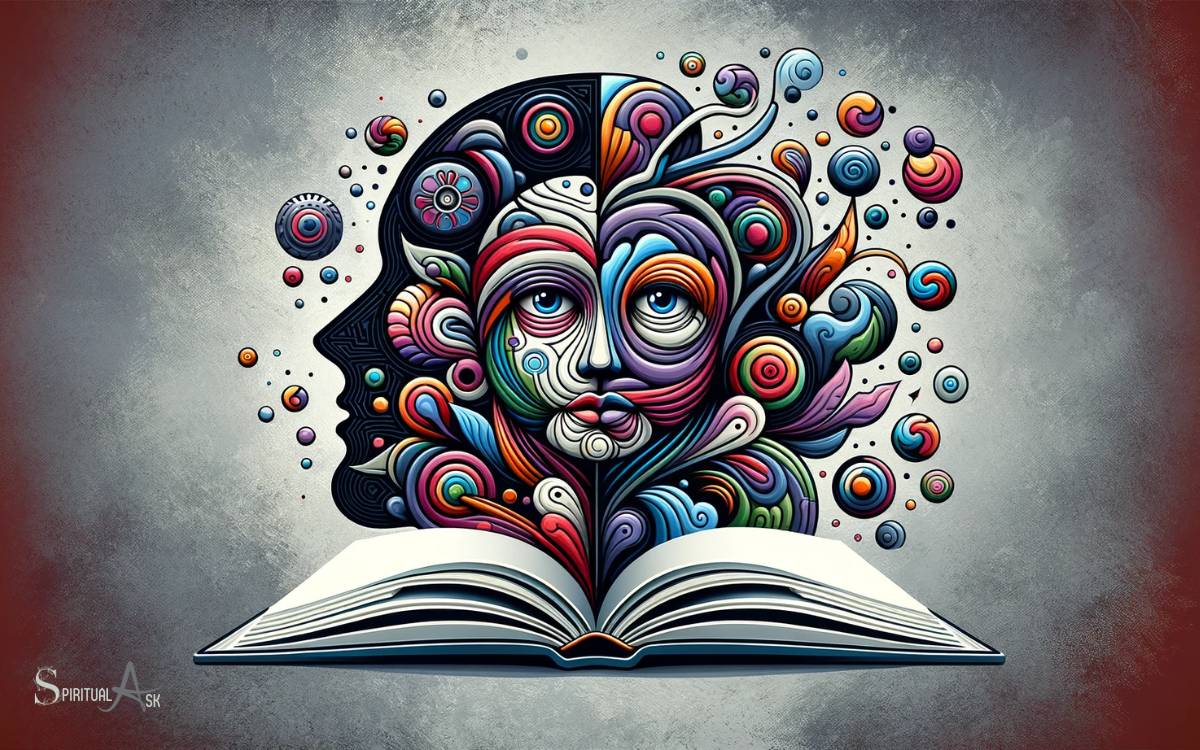
You’re experiencing a basic cognitive process. Your brain is hardwired to recognize faces and meaningful shapes to help you make sense of the world quickly. It’s not a spiritual gift, but rather an evolutionary advantage.
Researchers suggest that this tendency to find significance in noise provided ancestral humans with survival benefits.
For example, spotting a predator in a complex environment could mean the difference between life and death.
Your knack for seeing faces in clouds or hearing hidden messages in music isn’t mystical it’s your brain’s pattern recognition at work, a trait honed by natural selection.
Historical Perspectives
While your brain’s ability to spot patterns in randomness is a product of evolution, historical accounts show that ancient cultures often interpreted these same visual or auditory illusions as messages from the divine or omens of the future.
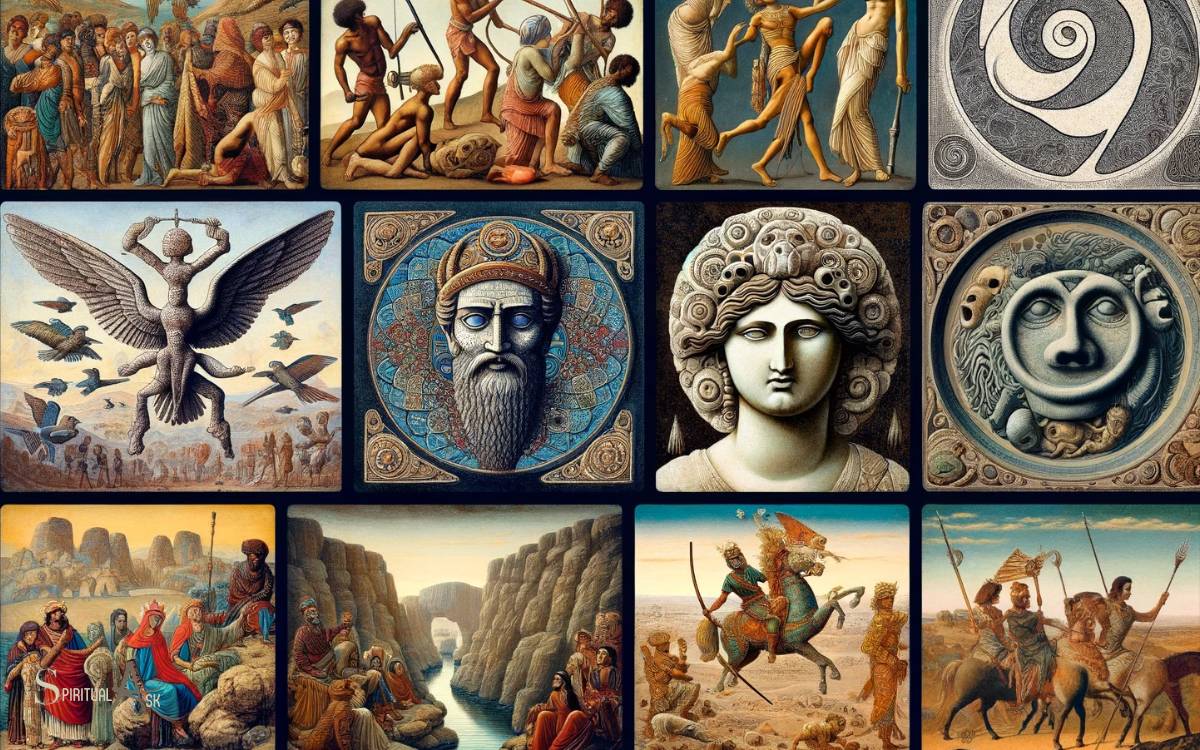
These interpretations were not mere superstitions; they were embedded in the spirituality and mythologies of the times.
Analyzing historical texts and artifacts reveals:
- The Greeks saw images in the clouds as signs from the gods.
- Norse mythology interpreted certain natural patterns as runes with prophetic meanings.
- In East Asian cultures, cloud formations were sometimes seen as dragons, signaling shifts in dynasties.
- Biblical passages suggest that prophetic visions could have been instances of pareidolia.
This evidence reflects the profound impact that pareidolia had on shaping spiritual beliefs and practices.
Psychological Mechanisms
Your brain’s wiring for pattern recognition underpins the psychological mechanisms that lead to the experience of pareidolia, often without your conscious awareness.
It’s a byproduct of survival instincts, honed through evolution to quickly discern faces and forms, which were crucial for identifying threats or social cues.
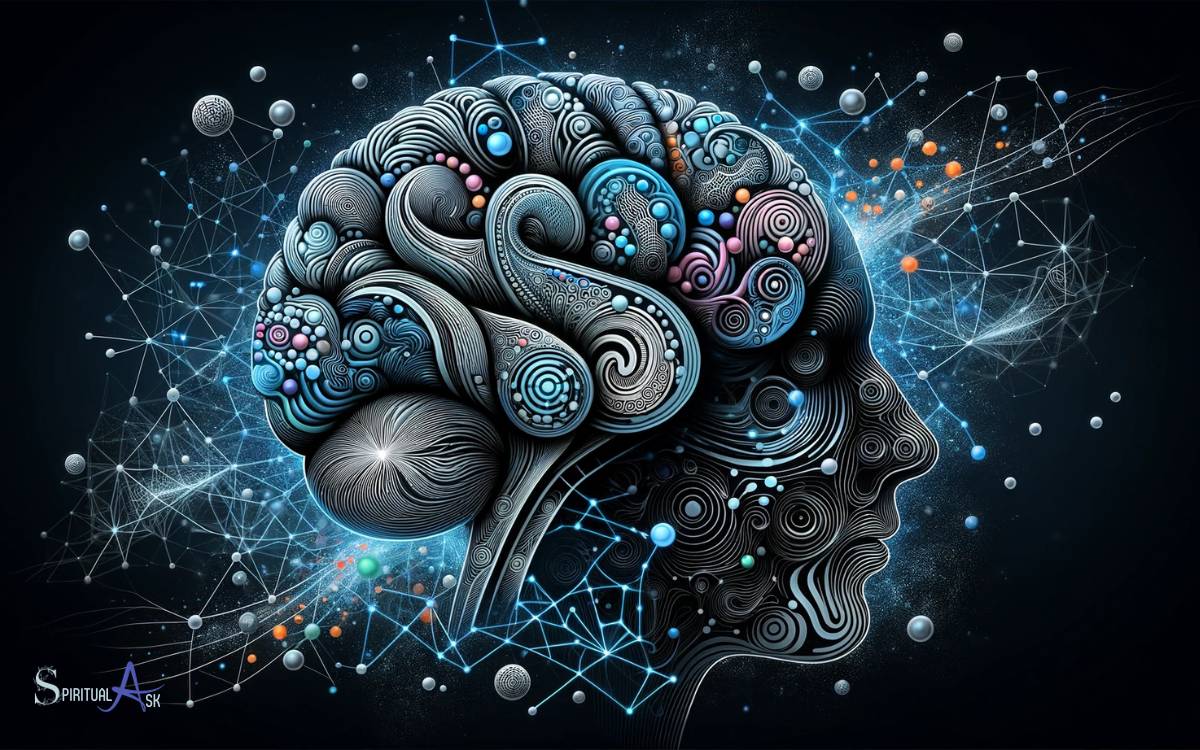
This inherent ability explains why you might see a face in the clouds or a figure in shadow your mind’s default to organize random stimuli into familiar patterns.
Neurological studies suggest that regions like the fusiform gyrus, responsible for face recognition, become active during pareidolia.
This activation doesn’t imply spiritual connectivity but rather showcases your brain’s sophisticated system for making sense of the world, a testament to its remarkable adaptability and efficiency in processing visual information.
Spiritual Interpretations
Many individuals interpret pareidolic experiences as spiritual messages or signs, attributing profound meaning to these visual patterns.
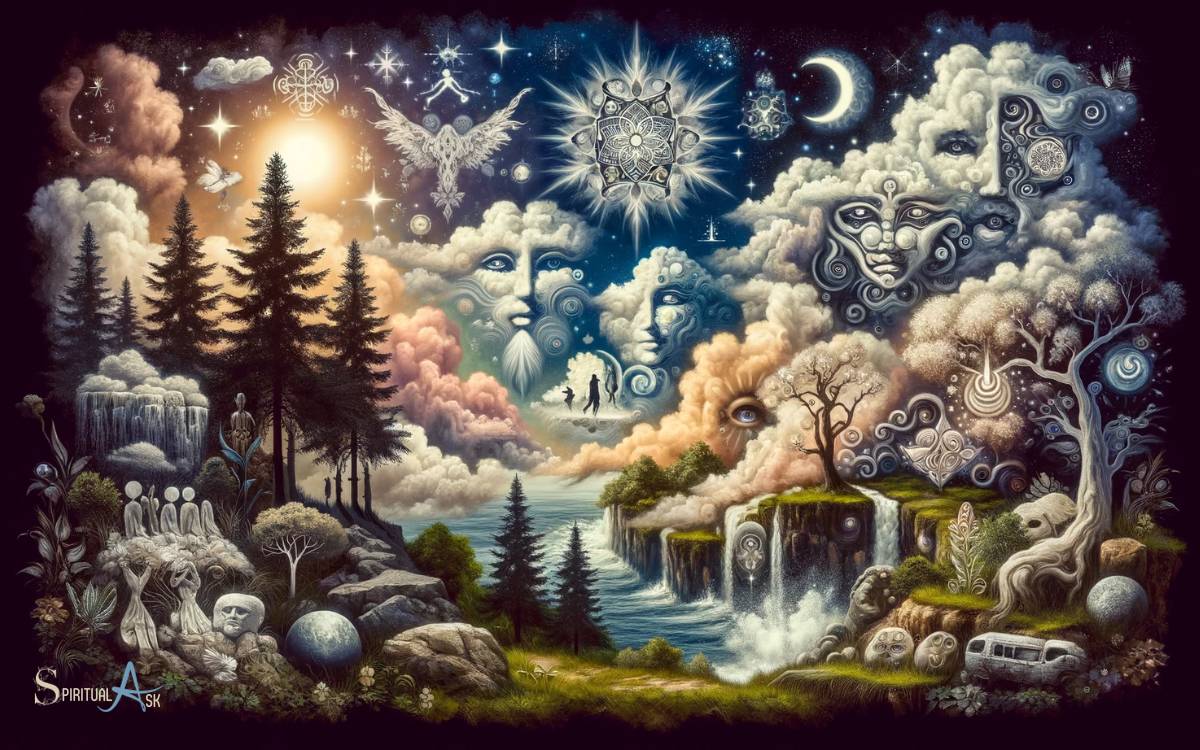
You might see a face in the clouds and feel it’s a deceased loved one watching over you, or discern a sacred symbol in tree bark, interpreting it as a divine sign. These interpretations often hinge on personal belief systems and cultural backgrounds.
Consider the following points:
- Pareidolia can reinforce spiritual beliefs by providing what seems like empirical evidence of the supernatural.
- Individuals may interpret these experiences differently, depending on their religious or spiritual inclinations.
- Some cultures have historical precedents for considering pareidolic experiences as omens or messages from the divine.
- Skeptics argue that pareidolia is purely a neurological response, devoid of spiritual significance.
Cultural Significance
Throughout history, you can observe that pareidolia has played a crucial role in shaping cultural narratives, often influencing historical interpretations of events and phenomena.
Religious practices around the world have integrated pareidolic experiences into their symbolism, attributing sacred significance to naturally occurring patterns.
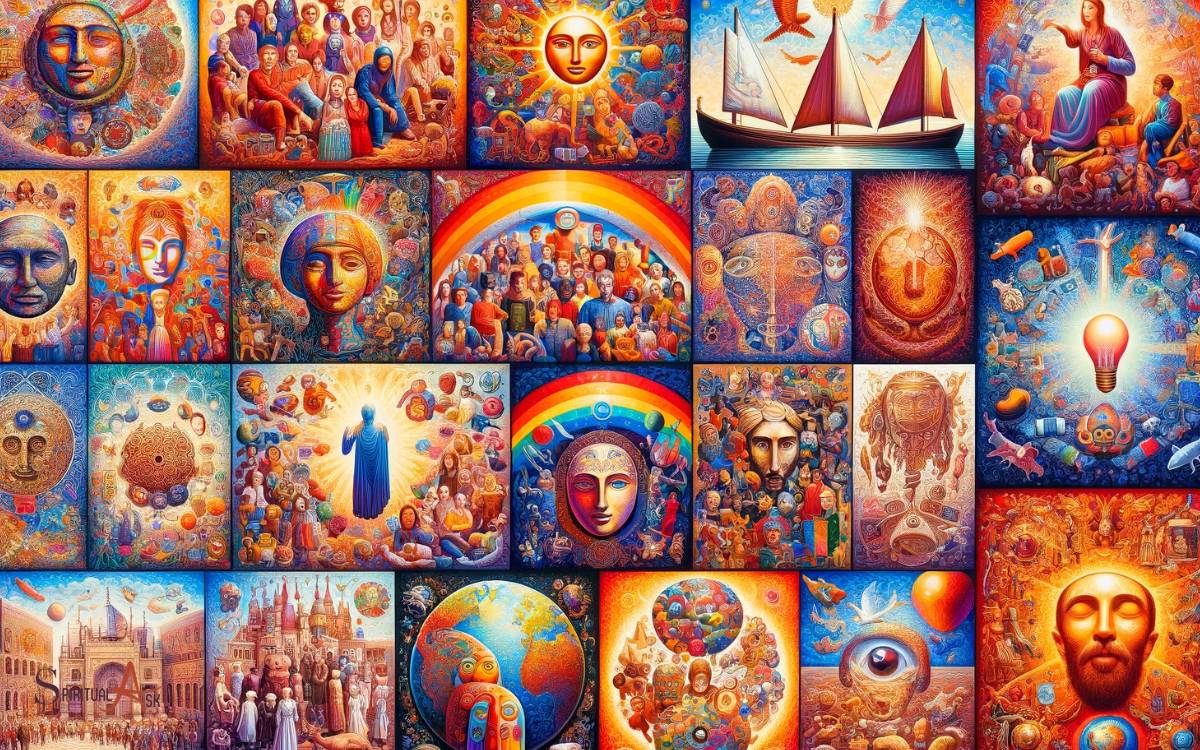
The prevalence of pareidolia in mythology and folklore also underscores its impact, serving as a testament to its enduring influence on human imagination and belief systems.
Historical Interpretations
Historically, cultures worldwide have imbued instances of pareidolia with profound spiritual significance, interpreting these visual phenomena as messages from the divine or omens of future events.
This pattern recognition capability has been a conduit for spiritual and religious experiences throughout history:
- Ancient civilizations often perceived gods and spirits in natural formations like mountains or clouds.
- Medieval religious texts sometimes depicted stories of saints witnessing holy figures in everyday objects.
- In East Asian cultures, certain natural patterns were believed to be auspicious signs from ancestors or deities.
- Shamanic traditions across various societies have interpreted visions during trances as spiritual messages, often facilitated by pareidolic experiences.
Your understanding of pareidolia as a spiritual gift can gain depth when considering these historical interpretations, recognizing its longstanding role in human spirituality.
Religious Symbolism
You’ll find that religious texts and artifacts across the globe are replete with symbols that, through pareidolia, have become significant to spiritual beliefs and practices. Pareidolia has played a pivotal role in the interpretation and reverence of religious symbols.
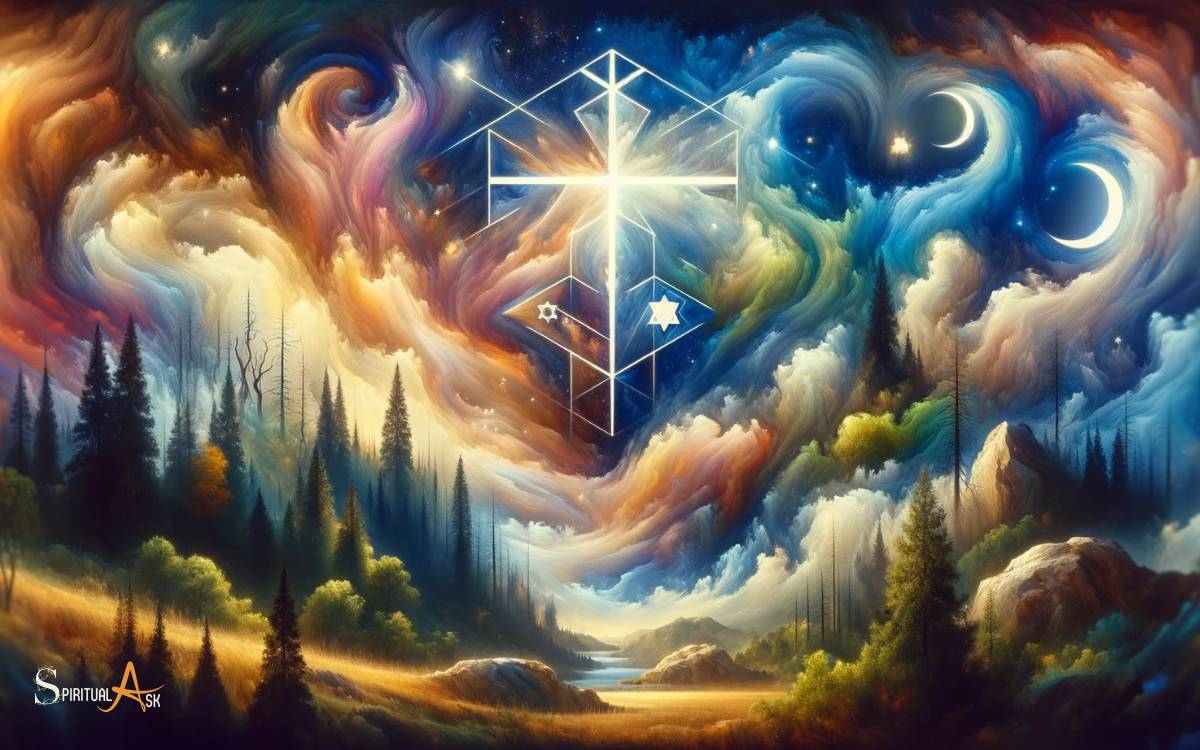
Human brains are wired to seek patterns, and this proclivity extends to imbuing natural phenomena or man-made objects with sacred significance.
| Symbol | Religion | Significance |
|---|---|---|
| Cross | Christianity | Represents the crucifixion of Jesus and symbolizes redemption. |
| Crescent Moon | Islam | Often seen in clouds or markings, signifies the Islamic |
| Lotus | Buddhism | Observed in nature, embodies purity and enlightenment. |
These symbols, interpreted through pareidolia, can reinforce spiritual narratives and provide a tangible connection to the divine for believers, further embedding these symbols in cultural and religious identity.
Mythology and Folklore

From ancient civilizations to modern-day storytelling, pareidolia has shaped countless myths and folklore, assigning profound meaning to natural occurrences and objects perceived as embodying mythical figures or events.
This psychological phenomenon is not just a quirk of the human mind; it’s a testament to your innate desire to find patterns and significance in the world around you.
Here are some key ways pareidolia has influenced mythology and folklore:
- The “Man in the Moon” narrative, where facial features are seen in the moon’s surface.
- Seeing legendary creatures in rock formations or cloud patterns.
- Interpreting the Aurora Borealis as dancing spirits or deities.
- Finding divine messages in the random arrangements of stars, leading to the creation of constellations.
These examples reflect how pareidolia can transcend mere illusion, impacting cultural beliefs and traditions.
Personal Experiences
You’ve likely encountered moments where you recognize shapes or faces in clouds or patterns on a wall, reflecting the psychological phenomenon known as pareidolia.
Studies suggest this tendency carries an emotional impact, resonating with you on a personal level, and often evoking a sense of wonder or spirituality.

Yet, it’s crucial to discern whether these instances are mere coincidences or if they indeed carry a deeper significance, potentially acting as signs in your life.
Recognizing Hidden Patterns
Many individuals report that their ability to spot patterns in random stimuli, a phenomenon known as pareidolia, has led to profound personal revelations.
You might have experienced this yourself, seeing familiar shapes in clouds or faces in inanimate objects. This pattern recognition can sometimes feel like more than a simple trick of the mind.
Consider these points to deepen your understanding:
- Frequency: Notice how often you experience pareidolia, as this could indicate a heightened awareness.
- Emotional Response: Reflect on the emotions that these patterns evoke; some find comfort or awe.
- Contextual Relevance: Analyze whether these patterns hold meaning in your current life situation.
- Consistency: Observe if the patterns you see tend to have consistent themes or messages.
Approach these experiences with an analytical mindset to discern whether they might carry personal significance beyond the random play of light and shadow.
Emotional Resonance of Pareidolia
While considering the frequency and consistency of pareidolia in your life, it’s crucial to explore the emotional resonance these experiences may hold for you personally.

The phenomenon isn’t merely a trick of the mind; it can elicit profound emotional responses. Studies suggest that pareidolia can have a comforting effect, especially when you perceive familiar patterns in unfamiliar environments.
This response is potentially linked to evolutionary mechanisms where recognizing faces from a distance could have been advantageous for survival.
It’s also worth noting the personal variation in emotional impact. For some, pareidolia might invoke nostalgia or a sense of connection to something greater, hinting at its perceived spiritual significance.
For others, it may simply be a fleeting amusement. Evaluating your reactions can provide insight into your psychological and emotional landscape.
Pareidolia: Coincidence or Sign?
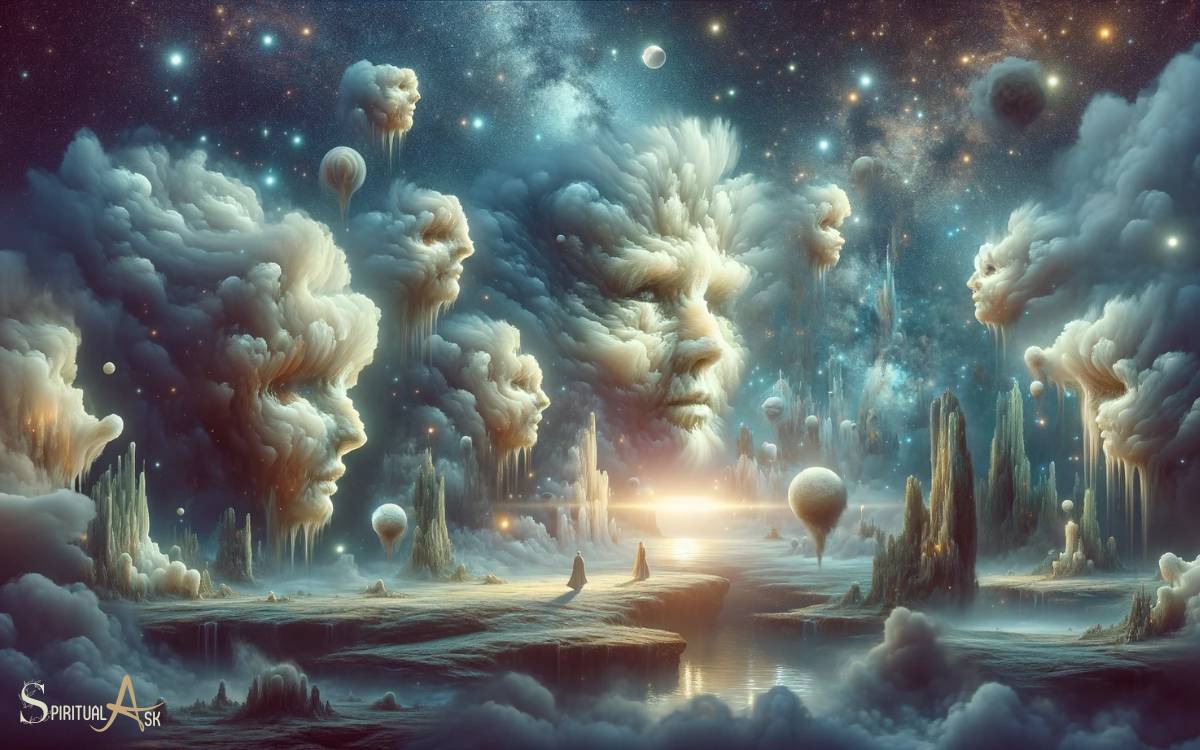
Reflecting on personal experiences of pareidolia, it’s essential to consider whether these occurrences are mere coincidences or potentially meaningful signs.
While you may feel a personal connection to these images, understanding the phenomenon requires an objective analysis.
Here are key considerations:
- Psychological Explanation: Pareidolia is a well-documented psychological phenomenon, suggesting a natural propensity for recognizing patterns.
- Frequency of Occurrences: Commonality of such experiences among many individuals might point to coincidence rather than uniqueness.
- Cultural Influence: Shared cultural symbols can predispose you to certain interpretations, affecting perceived significance.
- Emotional State: Your current emotions can influence whether you view pareidolia as a sign, which suggests a subjective element to these experiences.
These points encourage a rational approach, weighing personal meaning against scientific understanding.
Perspective Argument for Spiritual Gift And Against Spiritual Gift
The concept of spiritual gifts is a topic with varied perspectives, often influenced by religious beliefs, personal experiences, and philosophical views. One common source of understanding spiritual gifts comes from the Christian tradition, which references the New Testament passages that discuss the gifts as bestowed on believers by the Holy Spirit. Additionally, many believers look to the original Greek word for “spiritual gifts,” which is “charismata,” to further understand their purpose and significance in the lives of believers. What the Greek word means can shed light on the nature and intent of these gifts for those who seek a deeper understanding.
Here, we’ll explore arguments for and against the concept of spiritual gifts to provide a balanced view.
Argument for Spiritual Gifts
- Biblical and Religious Support: Many religious texts and traditions explicitly mention spiritual gifts, suggesting they are divine endowments meant for community service and personal growth.
- Evidence from Personal Experiences: Individuals across different cultures report unexplainable phenomena consistent with spiritual gifts, such as healing and prophetic insights, reinforcing their belief in such gifts.
- Community Benefit: Spiritual gifts often lead to positive outcomes, such as healing, guidance, and support, which can significantly impact communities positively.
- Philosophical Implications: The belief in spiritual gifts aligns with broader existential views that human life has a higher purpose connected to the divine, offering a deeper meaning to existence.
Argument Against Spiritual Gifts
- Lack of Empirical Evidence: There’s a notable absence of scientific proof for spiritual gifts, with many experiences being subjective and not universally verifiable.
- Psychological and Natural Explanations: Psychological theories and natural explanations can often account for phenomena attributed to spiritual gifts, such as the placebo effect or cognitive biases.
- Cultural and Religious Bias: Interpretations of spiritual gifts are heavily influenced by one’s cultural and religious background, leading to varied and sometimes conflicting views.
- Risk of Exploitation: The concept of spiritual gifts can be misused, with individuals exploiting these beliefs for personal gain or to exert control over others, raising ethical concerns.
This concise overview presents a balanced view, highlighting the primary arguments for and against the concept of spiritual gifts, touching on religious, personal, scientific, and ethical perspectives.
Can Pareidolia Be Considered a Spiritual Gift?
Pareidolia, the phenomenon of perceiving familiar patterns where none actually exist, like seeing faces in inanimate objects, is often seen as a psychological occurrence rather than a spiritual gift. However, its interpretation can vary greatly among different cultures and spiritual beliefs.
In some traditions, pareidolia might be considered a sign of a spiritual gift, suggesting an enhanced ability to recognize and connect with the divine or spiritual realm in everyday life.
This perception could be seen as a unique sensitivity to the spiritual world, allowing individuals to find significance and messages in the mundane.
- Enhanced intuition or insight
- A deeper connection to the spiritual world
- The ability to see beyond the physical or obvious
Spiritual gifts cannot be revoked, this principle underlines the belief that once a spiritual gift is given, such as the potential gift of pareidolia in a spiritual context, it remains with the individual permanently, serving as a constant guide or source of spiritual insight.
Debating Its Meaning
The interpretation of pareidolia as a spiritual gift has sparked considerable debate among psychologists, spiritualists, and cultural theorists. As you delve into this discourse, it’s essential to weigh the evidence objectively.

Psychologists often argue that pareidolia is a byproduct of the brain’s pattern recognition capabilities, essential for survival rather than a spiritual phenomenon.
On the other hand, spiritualists may assert that these experiences transcend the ordinary, potentially offering a connection to a higher realm.
Cultural theorists suggest that pareidolia’s interpretation is influenced by societal and individual belief systems.
Your understanding of this phenomenon should be guided by a critical evaluation of the arguments, recognizing that personal biases and cultural backgrounds can shape one’s perspective on whether pareidolia is merely a cognitive quirk or something more profound.
Conclusion
You’ve seen pareidolia is not a spiritual gift but a mental quirk, a tapestry of the mind’s threads weaving familiar patterns from chaos. Historical and cultural layers add depth, while psychological underpinnings anchor it in the realm of the cerebral.
Your experiences shape its narrative, but remember, it’s grounded in human cognition, not the mystical. Analyze each visage in the clouds with a blend of wonder and skepticism, for they are mirrors of your psyche, not whispers of the divine.

